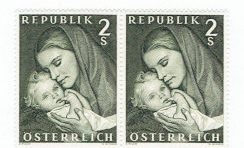Creating a Philatelic Collection Plan
By D. J. McAdam
Let us begin by saying that it is, unquestionably, good to have a stamp collecting plan, if you’re going to collect stamps. Your resources, such as time and money, are finite, and even though you probably collect stamps to relax and enjoy yourself, there’s no harm in giving a bit of forethought to precisely how you intend to use your resources.
What we’ve put together below is a framework which may be useful to you in developing your own philatelic collection plan. These are questions that you should ask yourself, and attempt to answer. It would probably be ideal to do this at the beginning of such an undertaking, but many of us probably only realize that we need such a plan after our closets are half full of stamps and supplies we’re not sure we need. Don’t be discouraged, but instead look upon this as one small step on the way to bringing order out of chaos.
Decide specifically what you’re going to collect, and write down your decision.
It’s not for us, or anyone else, to tell you what to collect, but you should at least know what you’re doing in that regard. You might collect only the stamps of a certain county, such as Bolivia, or only the stamps of a certain region, such as Latin America. You might collect only stamps from a certain time period, such as pre-1940, or 1950-1970. You might combine these two ideas, and collect only pre-1940 Latin American stamps. Will you collect only used stamps, only unused stamps, or both? Will your collection include postal covers, postal stationery, cut squares, revenue stamps?
Decide how you are going to house your stamps.
For many of us, this means a stamp album, but which album, or albums? Will the albums be hingeless, or will you use stamp mounts? Who will you purchase these albums from, and how much will they cost? Will you use stockbooks, either as an alternative to albums or as a supplemental storage solution? Again, Who will you purchase these stockbooks from, and how much will they cost? And where are the albums and stockbooks going to be stored? They need to be kept safe, protected from temperature extremes and high humidity.
Decide what other supplies and equipment you’ll need. 
A magnifying glass will be helpful; so will watermark fluid and a tray. If you need stamp mounts, and glassine envelopes, and things like that, decide now. How about stamp catalogues and reference books? What about those fancy ultraviolet lamps? Again, decide what you’ll purchase, where you’ll purchase these items, how much they’ll cost, and where they’ll be stored when not in use.
Decide when and where you’ll work on your collection.
If you have some huge empty study at your disposal, then we envy you. If not, make sure your use of the kitchen table won’t interfere with the plans of others. As far as when you’ll work on your collection, it is tempting to say, “Whenever I can.” Really, though, you’re better off with a set schedule if you can manage it. What you’re developing here is a sort of time budget. And speaking of budgets….
Decide how much money you’ll spend on your collection each month.
This should include items for your collection, the supplies we’ve discussed above, and any other related expenses, such as philatelic membership dues.
Decide which philatelic organizations you’ll belong to.
We belong to the American Philatelic Society, and always recommend that organization to others. You may wish to also join an organization specific to your collecting interest; for example, if you collect the postage stamps of Mexico, there is the Mexico Elmhurst Philatelic Society International. Also give some thought as to just how active you’ll be in any organization you join – an important question, and it’s better to answer it honestly now.
Decide how you’ll sell, donate, or otherwise get rid of unwanted philatelic material.
The beauty of having a plan, of course, is that you shouldn’t end up with too much in the way of unwanted material, but acquiring some seems inevitable. Will you sell your unwanted items via the APS Stamp Store? Will you send them to an auction house to be disposed of, or sell them via the stamp circuit of your club? Not all buyers of stamps are equal, and one would have to have a greater imagination than ours to believe that everyone who claims to “pay top dollar for your stamps” really does so.
Decide what happens to your collection when you’ve shuffled off this mortal coil.
None of us are immortal, so it’s reasonable to conclude that the stamp collection you build could be here after you’ve moved on. If you’re going to give it to someone, specify that in a will, and make sure the person receiving it has some honest idea of its value, and some idea of what to do should he or she (gasp!) wish to dispose of it. If you’re going to donate it to some worthwhile organization, make sure that organization wants your collection and, again, make sure your wishes are clearly recorded in your last will and testament.
We think this covers most of the basics, and hope that it’s helpful. Happy collecting!
Looking for stamps for your collection? Be sure to check out Sonora Stamp Shop.